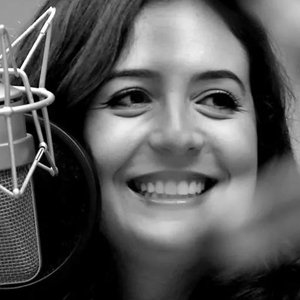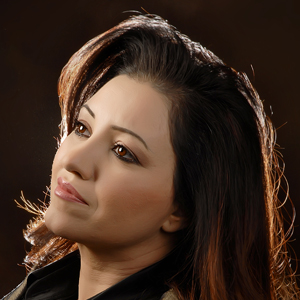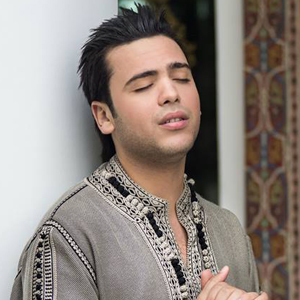Arabo- Andalous Orchestra of Fes, directed by Mohammed Briouel
with Beihdja Rahal (Algeria), Sonia Mbarek (Tunisia), Sanaa Maharati, Nabyla Maan, Marouane Hajji (all of Morocco)
In the capable hands of master Mohammed Briouel, Andalus music shines forth in the great traditions of the Maghreb and Lebanon.
Fill our cups, the breeze is starting. The stars begin to halt their course. Dawn offers us the purity of camphor. The night has taken back her dark amber.
Ibn Ammar (1031-1086)
A night of Andalous music at the Festival of World Sacred Music has become a tradition. It marks the history and heritage of which Fes is so proud, its own Andalousia.
Mohammed Briouel is master and keeper of the Al-âla repertoire, securing the tradition that he holds with infinite refinement.
With Briouel and his musicians around him, we set off this year towards other places and other styles that, during various historic revivals, have themselves become keepers of this same heritage, each with its own personal touch.
In the school of Algiers, in Tunisian malouf (classical music), and also in the Moroccan tradition, it is principally women who perform this art: Beihdja Rahal of Algeria is one of the Andalous singers most closely associated with the roots of this art; the famous Sonia Mbarek of Tunisia has radiated the art of malouf across the Arab world; and the young Andalus singers Sanaa Maharati and Nabile Maan who represent Morocco along with the exceptionally talented Marouan Haji, are well known today to the Moroccan public.
The Algiers school belongs to the tradition of sana’a from Cordoba, while that of Tunis bears an Ottoman influence in their use of Turkish modes (maqâmat) and compositional forms (for example, bashraf and samai), while remaining deeply Maghrebi and Arab-Andalous in spirit.
The Tunisian malouf repertoire was collected and defined in the 18th century by the Bey, Mohamed el Rashid, and consolidated in the 20th century by the Rachidia, the Tunisian national music school dedicated to preserving the tradition. In its purest form, each suite (nuba) is based on a single quarter-tone mode (maqam), so blending the structure of North African Adalous with Ottoman temperament.
 L’orchestre arabo-andalou de Fès
L’orchestre arabo-andalou de Fès
 Sanaa Maharati
Sanaa Maharati
 Beihdja Rahal
Beihdja Rahal
 Nabyla Maan
Nabyla Maan
 Sonia Mbarek
Sonia Mbarek
 Marouane Hajji
Marouane Hajji